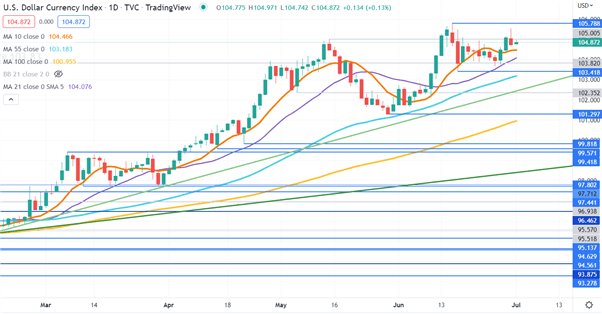S&P 500 STRATEGY: BEARISHThe S&P 500 has slid from its stimulus induced high as tightening bitesThe Fed has indicated that controlling inflat
S&P 500 STRATEGY: BEARISH
- The S&P 500 has slid from its stimulus induced high as tightening bites
- The Fed has indicated that controlling inflation is the priority going forward
- It appears that we are nearer the beginning of the tightening cycle, rather than the end
MONETARY POLICY IS A DOUBLE-EDGED SWORD FOR INVESTORS
The S&P 500 made a peak in January after a rally that can only be described as mind blowing. A global pandemic saw central banks put on a party for the ages. They threw more stimulus at their economies than had ever been done before.
Asset prices gain when the cost of capital goes down and vice versa when the cost of capital goes up. The Federal Reserve has made it clear, in no uncertain terms, that interest rates are going up. They will remain high until the inflation genie is back in the bottle.
The cost of capital is going up and could continue to do so. This may sound rudimentary, but it seems that not all equity investors are cognizant of this.
FEDERAL RESERVE ACTIONS HAVE CONSEQUENCES
While the story of falling equity prices has been with us for a while, the situation has continued to deteriorate with the Federal Reserve now unequivocally committed to bringing down inflation.
Fed Chair Jerome Powell recently said that there is a risk that the central bank could go too far in this tightening cycle, but that wasn’t the biggest risk to the economy. He said, “the bigger mistake to make, let’s put it that way, would be to fail to restore price stability.”
He has previously said that if supply chain issues are resolved, then the growth might remain positive. But if they are not resolved, then it could be a hard landing for the economy.
A quick look at the macro data in the US shows the latest annualized quarterly GDP growth at -1.6%, headline CPI at 8.6%, PPI at 10.8% and the unemployment rate under 4%.
With PPI remaining stubbornly high, companies can either pass on their higher costs to consumers or they face margin compression.
The former will add to CPI, which will put further pressure on the Fed to tighten more aggressively. The latter will see earnings slide and if P/Es are to remain constant, the price must fall. Of course, P/Es might go higher, but it is hard to imagine an investor that is willing to pay a higher multiple in the current environment. The E in P/E is under threat.
In any case, if a company passes on increased costs or absorbs them, both scenarios undermine stock prices at this stage of the cycle.
The Fed has an inflation target of around 2%. All the rhetoric from the Fed is about getting back toward their target. The US has never lowered inflation by 2% or more without a recession. While the S&P 500 is a long way from the January high, it could have further to go.
S&P 500 TECHNICAL ANALYSIS
The technical picture seems supportive of the bearish S&P 500 view that this reasoning implies. With loose monetary policy, the index consistently made higher highs and higher lows. Now with tightening monetary policy, the price is making lower lows and lower highs.
From a technical perspective, unless a number of those prior highs are eclipsed, the descending trend remains in place.

S&P 500 daily chart created withTradingView
S&P 500 TRADING RESOURCES
— Written by Daniel McCarthy, Strategist for DailyFX.com
To contact Daniel, use the comments section below or @DanMcCathyFX on Twitter
element inside the
element. This is probably not what you meant to do!Load your application’s JavaScript bundle inside the element instead.
www.dailyfx.com
